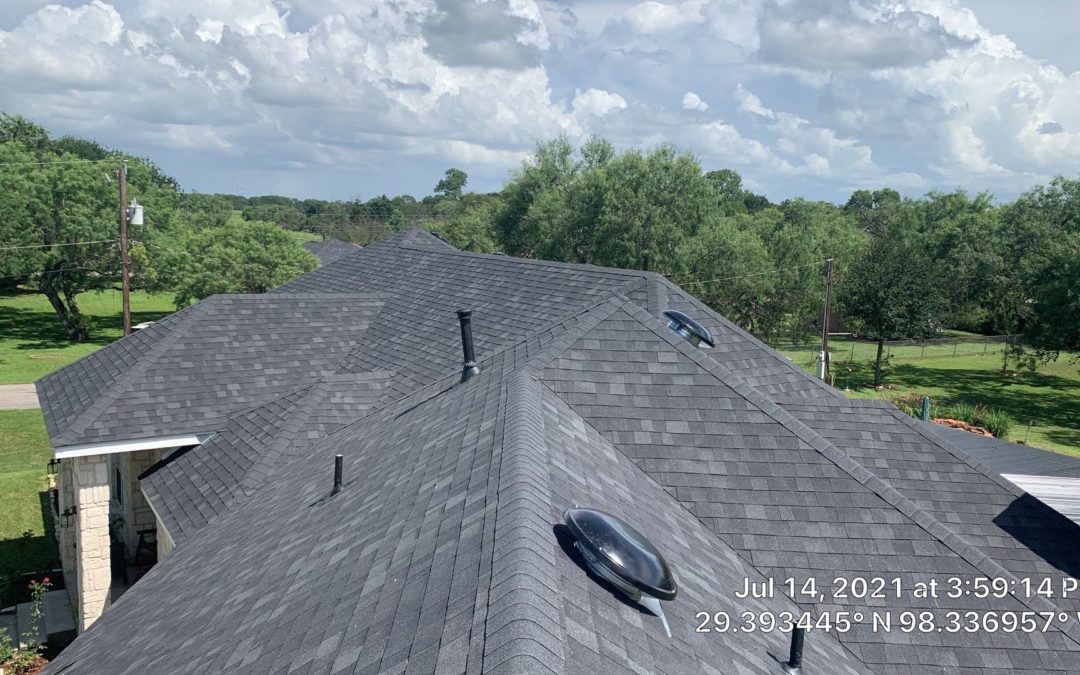Knowing when to replace your roof is crucial. Here are some common warning signs that it may be time to schedule a roof replacement:
- Age of Your Roof
Most roofs have a lifespan of 20 to 30 years, depending on the material. If your roof is approaching or past this age range, a full replacement is likely the safest option. - Missing or Damaged Shingles
Shingles that are cracked, curled, or completely missing are a clear sign your roof is deteriorating. Replacing a few shingles can be a temporary fix, but widespread damage means a new roof is the better long-term solution. - Water Leaks or Stains
If you see water stains on your ceiling or walls, it could mean your roof is no longer keeping moisture out. Leaks can lead to mold growth and structural issues if not addressed. - Sagging Roofline
A sagging or uneven roofline may point to structural damage or trapped moisture. This is a serious concern that typically requires immediate attention and a full roof replacement. - Higher Energy Bills
A poorly insulated roof can cause your heating and cooling system to work harder, increasing your energy bills. A new roof with proper insulation can help regulate your home’s temperature more efficiently.
Benefits of a Roof Replacement
Investing in a roof replacement offers many advantages beyond just improved appearance.
- Enhanced Curb Appeal
A new roof gives your home a clean, updated look. This is especially important if you plan to sell your home soon, as a new roof can significantly increase your property value. - Increased Energy Efficiency
Modern roofing materials are designed to reflect heat and insulate better than older roofs. This can help you save on energy costs and reduce your carbon footprint. - Better Protection
A new roof will offer superior protection against weather elements such as rain, wind, hail, and snow. It ensures that your home stays dry, safe, and secure. - Peace of Mind
Replacing your roof eliminates the worry of leaks, drafts, and other roofing issues. Most new roofs come with warranties that provide long-term protection and peace of mind.
The Roof Replacement Process
Replacing your roof may seem overwhelming, but a professional roofing contractor will guide you through each step. Here’s what you can expect:
- Inspection and Estimate
The process starts with a thorough inspection of your existing roof. The contractor will assess the damage, measure your roof, and provide an accurate estimate. - Choosing Materials
Next, you’ll choose the roofing materials. Asphalt shingles are the most common, but metal, tile, and slate are also popular options depending on your budget and style preferences. - Scheduling the Job
Once the details are finalized, the project will be scheduled. Most roof replacements take one to three days, depending on the size of your home and weather conditions. - Removal of Old Roof
The crew will begin by removing the old roofing materials. This step ensures that the new roof is installed on a clean and stable surface. - Installation of New Roof
Next, the underlayment, flashing, and new shingles or roofing materials are installed. The team will also check for proper ventilation and make sure everything is sealed correctly. - Final Inspection and Cleanup
After installation, the crew performs a final inspection and cleans up the area, removing all debris, nails, and old materials.
Is Roof Replacement Worth It?
Absolutely. While a roof replacement is a significant investment, it’s one that pays off over time. It protects your home, adds value, and reduces ongoing repair and energy costs. More importantly, it gives you peace of mind knowing your home is secure from top to bottom.



Recent Comments